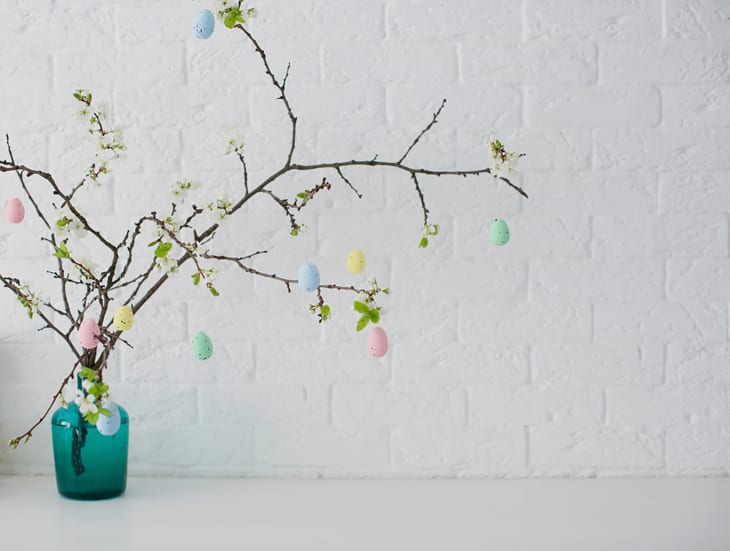This Old-School Easter Tradition Is Back (You’ll Want to Make Your Own!)

When it comes to the holidays and Christmas decor for apartments or homes, scenes of dazzlingly decorated Christmas evergreens may come to mind. While the Christmas tree has a storied history, there’s another holiday tree that has an intriguing background — the Easter egg tree, otherwise known as an ostereierbaum.
As the name implies, these are trees or branches decorated with hanging Easter eggs. One of the first U.S. mentions of an Easter egg tree was at a gala hosted by artist and designer Louis C. Tiffany of stained glass fame. While this festive tradition has early beginnings in the 1890s in America, its roots go even farther back to Germany and neighboring countries like Poland, Austria, and Hungary. Easter egg trees are also a fixture in Amish communities.
How Did Easter Egg Trees Originate?
Bob Richter, vintage lifestyle expert and author of Vintage Living and A Very Vintage Holiday, says it should come as no surprise that the Easter egg tree hails from Germany, since that’s where the Christmas tree originated as well. Ostereierbaum literally translates to “Easter egg tree.”
“Like the Christmas tree, Germany is credited with its beginnings,” Richter says. “Germans love to decorate for the holidays!”
During the Easter season, it’s common to drive through German towns and spot colorful, egg-shaped wood ornaments or hollowed-out eggshells adorning real outdoor trees. Inside, families will gather willow or birch branches, display them in a vase, and dress up the “tree” in egg ornaments. These can be minimally decorated or showcase thousands of eggs, like the Guinness World Record-holding Easter egg tree from Brazil in 2007, which had a whopping 82,404 egg ornaments!
Although the Easter egg tree’s exact beginnings are murky, this holiday tradition has at least been around for hundreds of years, eventually making its way to the United States in the late 19th-century through German immigrants.
Today, many people — whether they celebrate German traditions or not — display Easter egg trees each spring. Richter, whose own family has German roots and partakes in this tradition, says these pieces provide a cheerful touch this time of year, when many are longing for “warmer weather, sunshine, and flowers.” According to Richter, “an Easter egg tree brings all that right inside.” He adds that Easter, thematically, is all about rebirth, and the egg, in his opinion, is a “pretty ubiquitous” example of just that.
How to Style an Easter Egg Tree
Whether your style leans contemporary, boho, or anywhere in between, it’s easy to incorporate an Easter egg tree into your decor by using your home’s color palette as a jumping-off point.
“Like so many things in decorating, color is key,” Richter says. “Easter is typically associated with pastels, so decorating with all pastel eggs can be very pleasing.” He personally surrounds his Easter egg tree with freshly cut flowers as a sign of gratitude for spring as a blooming season.
You can choose to DIY your egg ornaments yourself for a personalized touch (there are tons of tutorials online), especially if you want to coordinate with a specific room or color scheme. And remember, even though pastels go hand in hand with this tradition, you can always push the tree into a more contemporary direction by weaving in more on-trend hues (like black and white, olive, or mustard) or stocking up on design-forward egg ornaments.